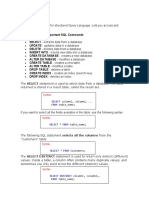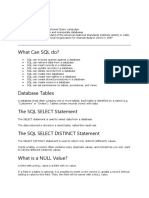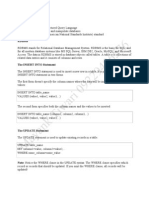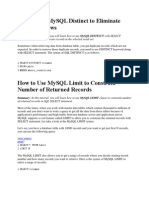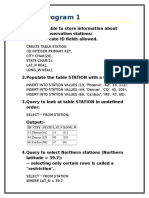0% found this document useful (0 votes)
67 views33 pagesSQL
The document provides an overview of common SQL statements and concepts including SELECT, WHERE, ORDER BY, GROUP BY, JOIN, functions like COUNT and AVG, operators like LIKE and BETWEEN. It explains how to retrieve, insert, update, and delete data from database tables and how to combine data from multiple tables.
Uploaded by
aaa zzzCopyright
© © All Rights Reserved
We take content rights seriously. If you suspect this is your content, claim it here.
Available Formats
Download as PDF, TXT or read online on Scribd
0% found this document useful (0 votes)
67 views33 pagesSQL
The document provides an overview of common SQL statements and concepts including SELECT, WHERE, ORDER BY, GROUP BY, JOIN, functions like COUNT and AVG, operators like LIKE and BETWEEN. It explains how to retrieve, insert, update, and delete data from database tables and how to combine data from multiple tables.
Uploaded by
aaa zzzCopyright
© © All Rights Reserved
We take content rights seriously. If you suspect this is your content, claim it here.
Available Formats
Download as PDF, TXT or read online on Scribd
/ 33






